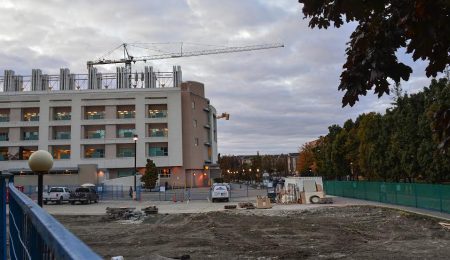The problem
THE GREENLAND AND Antarctic ice sheets are melting at an accelerating rate, and we’re not sure how that melting is going to change in the future.
Ice sheets are a metre stick for climate change, but measurements of the Greenland ice sheets’ past changes are in disagreement with physical models. In fact, models underestimate the effect rising temperatures will have on ice and sea levels, and things might get even worse.
If we want to avoid stumbling into the future blindly, it’s vital we understand how ice sheets have responded to climate change in the past and how that, in turn, will affect the world in the future.
The researcher
Benoit Lecavalier is a graduate student working with professor Glenn Milne in the departments of physics and earth sciences at the U of O. By using computational modeling, he works on reconstructing the evolution of the Greenland ice sheet from the peak of the last ice age to the present moment using field observations.
The project
By attacking the problem of ice thickness from a geophysical perspective, Lecavalier is able to address the overall system as a set of interlocking feedback loops—when temperatures rise, the ice coverage begins to melt, and the melting ice raises sea levels.
But what’s not so obvious is the ice sheets are so heavy they deform the planet itself. When they melt, the removed weight causes the planet to reshape, making sea levels on the other side of the planet rise even more. The Earth itself behaves like a giant, slow-moving fluid, responding to pressure from the ice.
The key
By considering the physical processes of the Earth’s deformation and subsequent reshaping, it’s possible to take a second look at the history of Greenland’s ice sheet, considering not only sea level, temperature, and past ice extent, but also the fluid response of the Earth.
Considering this additional set of constraints, Lecavalier is able to improve the agreement between the ice model and field observations. This improves our understanding of how ice sheets behaved in the past, which helps us better comprehend their behaviour today and predict their future.
Since there were times in the past when the Earth was this warm, understanding how ice responded then gives geophysicists a chance to glimpse the future today.
—Allan Johnson
Are you doing interesting science? Or do you have a professor who can’t stop talking about his or her research? Let us know at research@thefulcrum.ca



